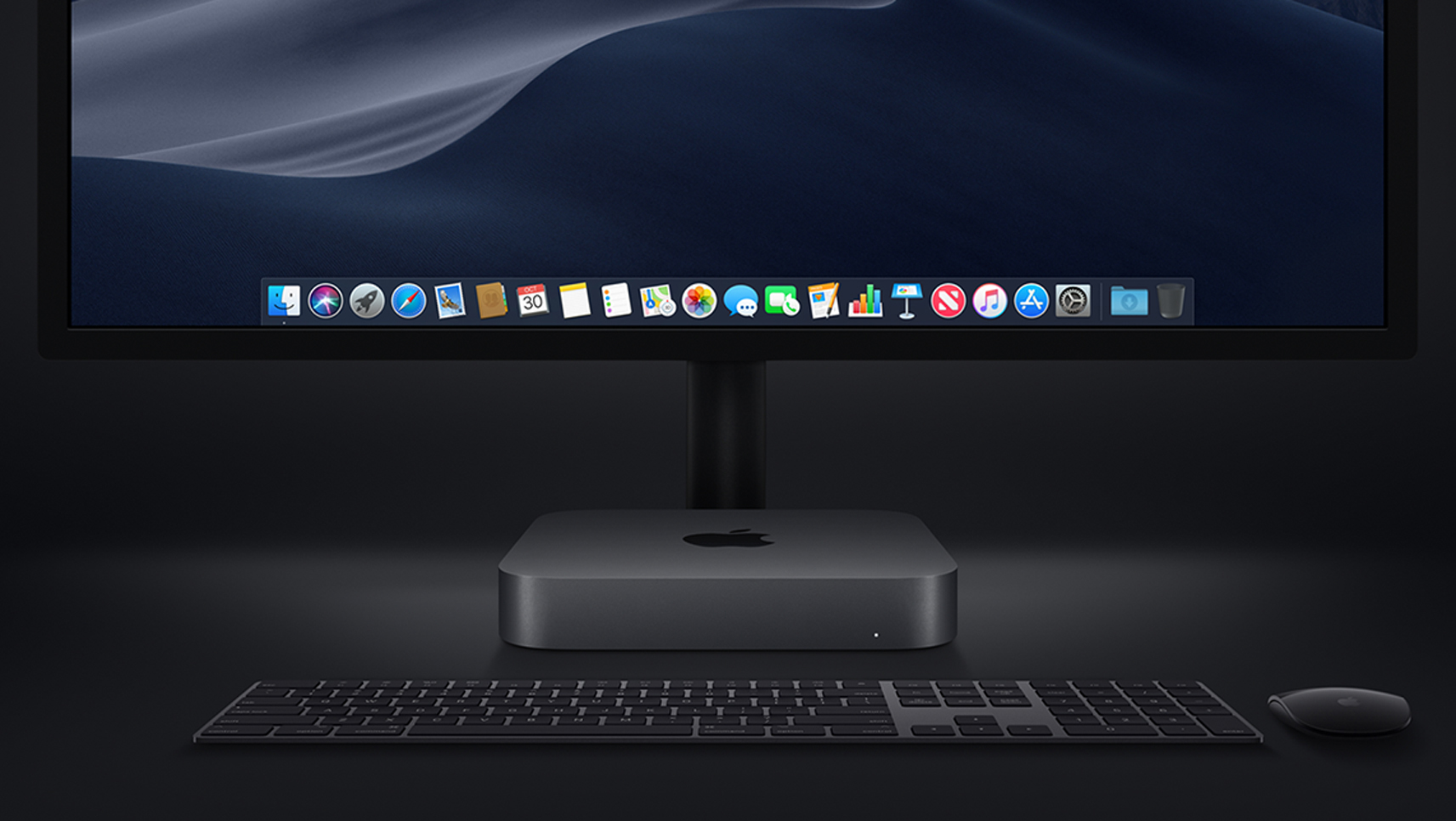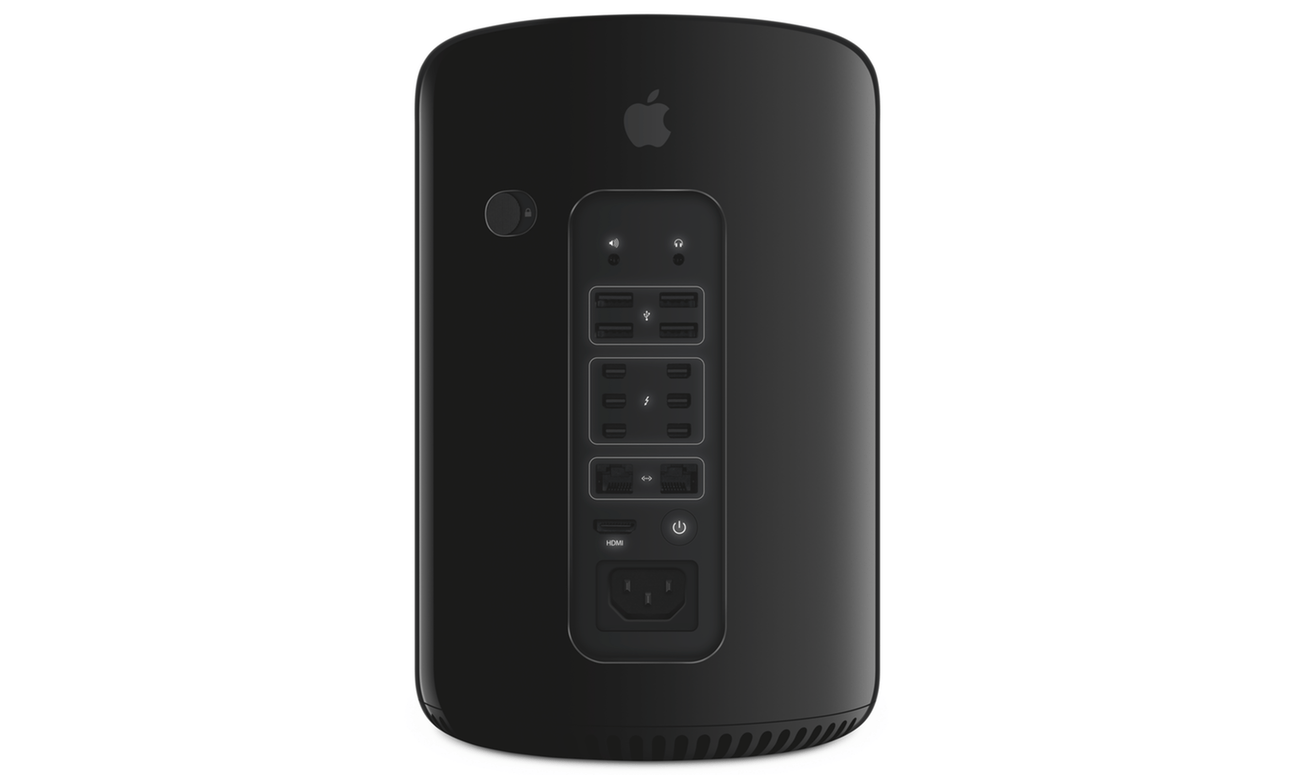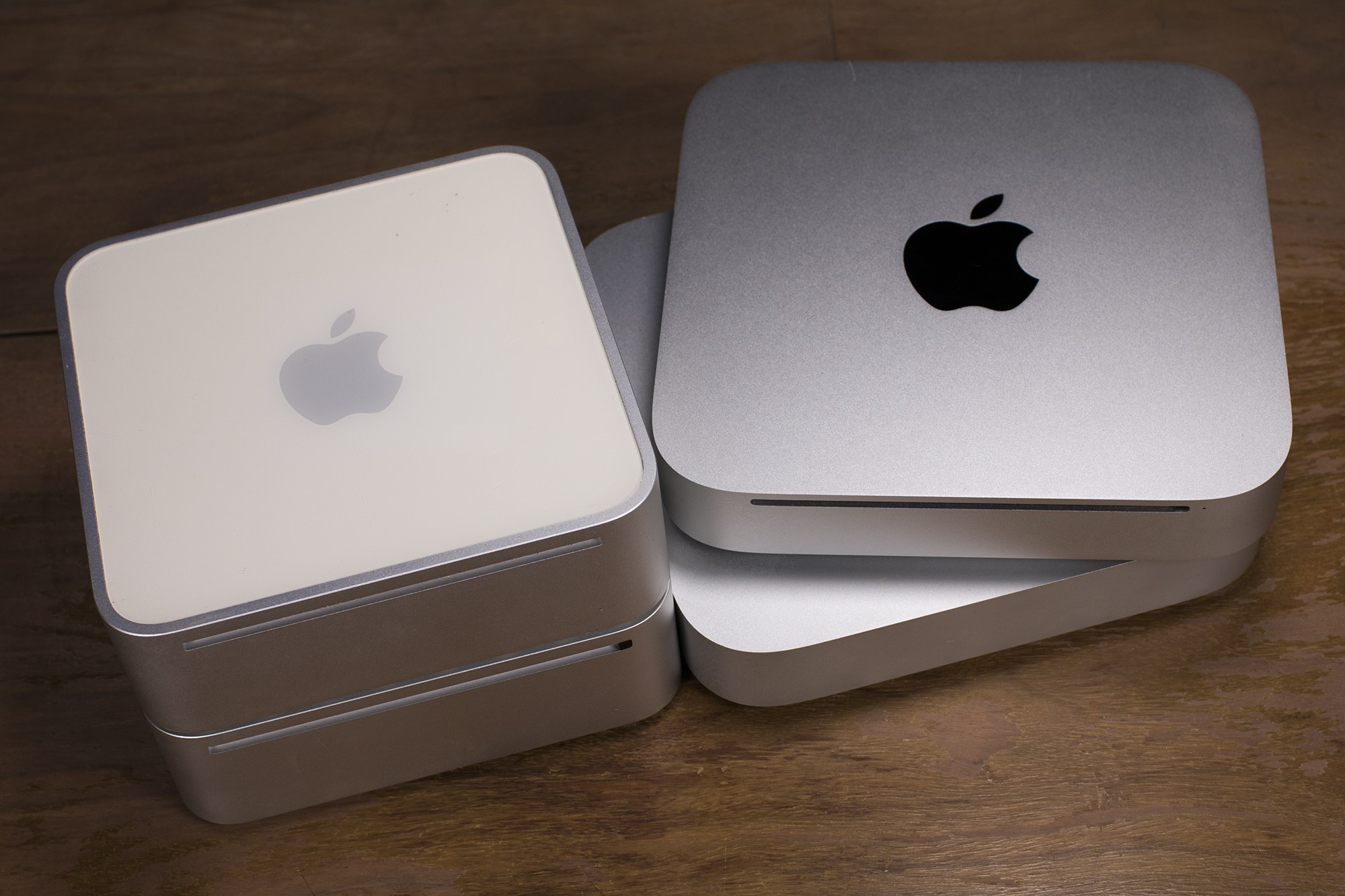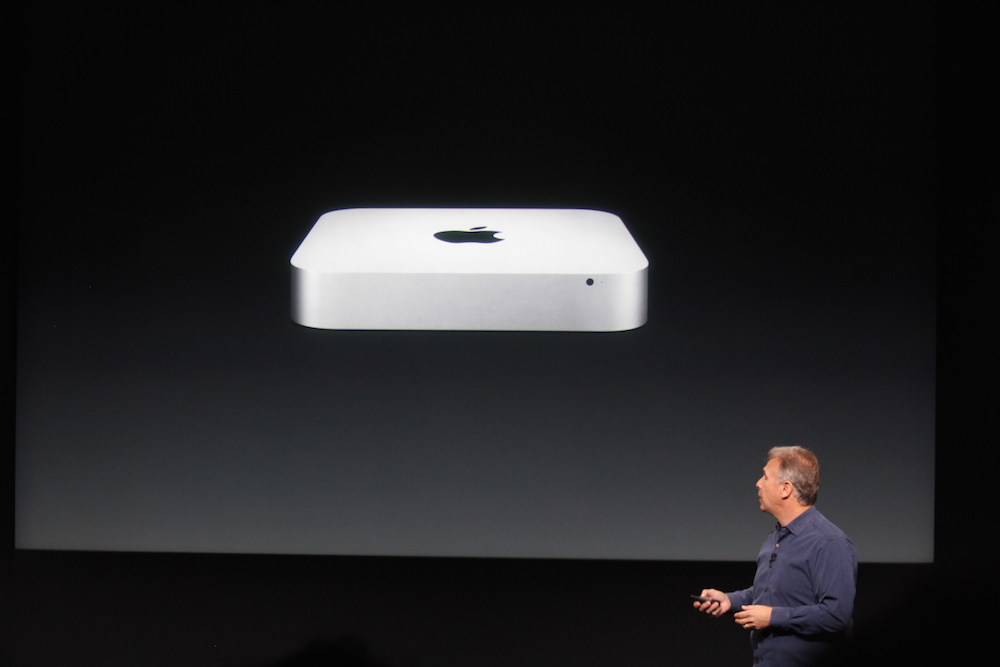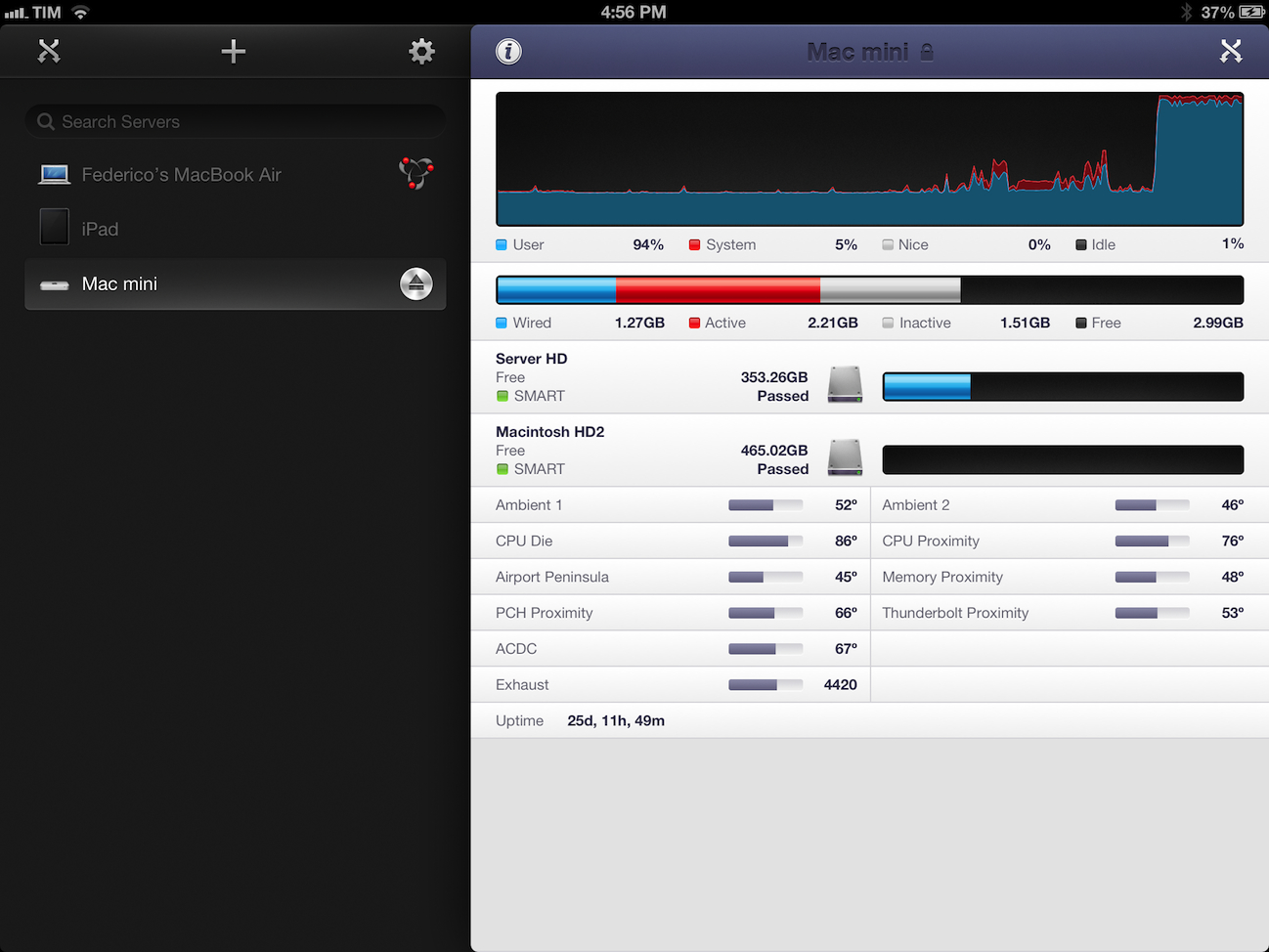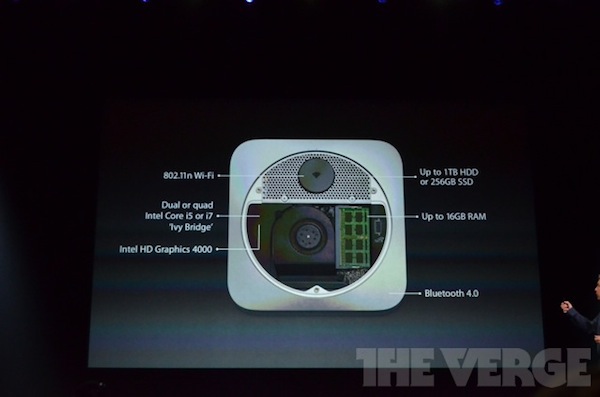Tim Cook introduced the new Mac mini at the Brooklyn Academy of Music’s Howard Gilman Opera House by gesturing to the sky. What followed was a video titled ‘The Arrival’ depicting a Mac mini descending like a UFO from the nighttime sky into the desert, which turned out to be a nighttime wallpaper from Mojave, Apple’s latest macOS update. It was a fun introduction to a computer that was last updated in 2014, and many Mac users had predicted would be discontinued.
Posts tagged with "mac mini"
Mac mini: The MacStories Overview
Apple Reveals its Mac Pro, Display Plans and More
I recall staring at the then-new Mac Pro at WWDC, which was displayed in a clear tube, not unlike the original iPhone. The design was unlike anything on the market then or since. That was 2013. The Mac Pro shipped just before Christmas 2013, but it hasn’t been updated since.
As the years wore on, pro users fell out of love with the Mac Pro. It was less upgradeable than other pro PC systems, and its internals quickly began to show their age. Disillusionment with the Mac Pro evolved into open speculation about whether Apple cared about the pro user market anymore.
Apple answered that question today. A new modular, more upgradeable Mac Pro is in the works. As John Gruber describes it on Daring Fireball Apple is working on:
a “completely rethought” Mac Pro, with a modular design that can accommodate high-end CPUs and big honking hot-running GPUs, and which should make it easier for Apple to update with new components on a regular basis.
To go along with the new Mac Pro, Apple is developing a new pro-level display. Unfortunately, the new Mac Pros and display won’t ship in 2017, and no firm launch date has been announced. In the meantime, Apple has bumped the speeds of existing Mac Pros:
The $2999 model goes from 4 Xeon CPU cores to 6, and from dual AMD G300 GPUs to dual G500 GPUs. The $3999 model goes from 6 CPU cores to 8, and from dual D500 GPUs to dual D800 GPUs.
In addition to the Mac Pro, Apple told Daring Fireball and a group of four other writers that it has a new iMac that will ship this year that is designed with pro users in mind.
So what went wrong? Why hasn’t the Mac Pro seen an update for so long? Senior Vice President of Software Engineering Craig Federighi told Matthew Panzarino of TechCrunch and the other writers in the room:
I think it’s fair to say, part of why we’re talking today, is that the Mac Pro — the current vintage that we introduced — we wanted to do something bold and different,” says Federighi. “In retrospect, it didn’t well suit some of the people we were trying to reach. It’s good for some; it’s an amazingly quiet machine, it’s a beautiful machine. But it does not address the full range of customers we wanna reach with Mac Pro.
Apple’s discussion with five writers covered a lot of ground. In addition to the new Macs discussed, Federighi said Apple is committed to the Mac mini and that scripting and automation on macOS remain ‘super important’ to Apple. It was also revealed that notebooks make up 80% of the Mac market and the pro market makes up roughly 30% of the Mac user base.
With the increasing drumbeat of discontent from pro Mac users over the past months, it is refreshing to see Apple address the pro market head-on and explain what happened with the Mac Pro. It’s disappointing that new Mac Pros are still many months off, but the breadth and depth of Apple’s candor with the writers it spoke to should provide comfort to pro users who can hold off on buying new hardware for a while longer. The key now will be whether Apple can execute its plans for the pro market.
The Mac mini Family Tree
“The Mac mini is BYODKM,” Steve Jobs said, in front of a crowded and slightly confused audience at Macworld 2005.
“Bring your own display, keyboard and mouse,” he continued. “We supply the computer, you supply the rest.”
The Mac mini was designed to lure switchers to the platform. A new customer could simply unplug their desktop PC and hook a new Mac mini up to their existing peripherals.1
The original machine started at just $499, making the Mac mini the lowest-cost Mac Apple has ever sold.
Macminicolo Merging with MacStadium→
Brian Stucki, writing on the Macminicolo blog, has some big news today:
In short, I’ve decided to sell ownership of Macminicolo and merge it with another company. I will stay on as President of Macminicolo and also serve as a Vice President of the parent company, MacStadium.
Now, I could just announce this with no explanation and be done with it . I could also write one of those generic acquisition posts focused on sunsets and brands and blah. Instead, I’ll be forthright and real like I’ve always tried to be with customers.
Macminicolo is the Mac mini hosting company in the Apple community, and this move feels right to me.
MacStories is hosted on Macminicolo (and has been for several years now). Moving to a dedicated mini has been one of the best decisions we’ve made in seven years of MacStories, and I’m excited to see what MacStadium brings to the table. I wish them all the best.
Ten Years of Mac Mini – A Timeline→
This weekend marks the ten year anniversary of the first Mac mini. I feel confident in saying that no one has watched this little machine grow more intently than I have watched it. It’s the center of everything I do here at Macminicolo.
Macminicolo’s Brian Stucki has put together a timeline with highlights from the past 10 years of the Mac mini. It’s fun to look back at the original “iHome” rumor and I’m glad the mini (the small but powerful machine that runs this website) is still around today.
A Look at the New Mac mini→
Brian Stucki of Macminicolo:
For home users, the increased Graphics will be a very welcomed upgrade. In a data center, that will be useful for those who process a lot of images and will likely help when screen sharing. (Speaking of screen sharing, these HDMI adapters have been very useful. I’ll be interested to see if they’re still needed for the 2014 Mac mini.)
We’ve been running MacStories on Macminicolo for two years now – one of the best decisions we ever made. Once properly configured, the Mac mini can be a little beast of a machine – I was so happy with our setup at Macminicolo, I now use a second Mac mini just to automate tasks remotely. And with yesterday’s refresh, it looks like I may have a serious candidate for my next Mac.
Apple Updates the Mac mini with Faster Processors, Thunderbolt Ports
Photo courtesy of Jason Snell at Six Colors.
At its media event held earlier today in Cupertino, Apple announced an update to its Mac mini line.
“People love Mac mini. It’s a great first Mac or addition to your home network, and the new Mac mini is a nice upgrade packed into an incredibly compact design,” said Philip Schiller, Apple’s senior vice president of Worldwide Marketing. “With the latest CPU and graphics, faster Wi-Fi, two Thunderbolt 2 ports, OS X Yosemite, and starting at just $499, the new Mac mini is the best value ever.”
Described by Phil Schiller’s as “the world’s most efficient” desktop computer, the new Mac mini comes with two Thunderbolt 2 ports, new fourth generation Intel Core processors, and 802.11ac WiFi. Packing an “entire Mac experience” in a small 7.7-inch-square frame, the new Mac mini will come pre-installed with OS X Yosemite and also offer four USB 3 ports.
iStat 2 Review
I like Bjango. They make the kind of simple, polished, and useful software that defines OS X as a platform with equal attention to beautiful pixels and powerful features. I was already a big fan of Consume and Skala. Bjango’s latest release, iStat 2, falls exactly under this category of apps: great-looking and efficient at the same time.
Mac Servers
I own a 13-inch MacBook Air and a 21.5-inch iMac. My MBA is the “work machine”, whereas the iMac has always been the media center of the house, as it’s connected to a couple of external drives with my iTunes library on it. For the past few months, however, I’ve been increasingly switching every part of my “entertainment workflow” from local to cloud-based. It started with Rdio a year ago (now, I have a Family account and I’m not switching any time soon). For iTunes, it means I’ve slowly uploaded my library to a Mac mini hosted on Macminicolo. As documented elsewhere, I’m very happy with Macminicolo, their reliability, and the overall message of a Mac mini server always available in the cloud.
But I’m not a “server guy”. I don’t understand the teminology behind server management, and my limited skills go as far as restarting WebDAV and Apache. I use my Mac mini primarily for media streaming through Plex and as a server for Mail, OmniFocus, Dropbox, and other services or apps that allow me to automate my workflow in the cloud. All my Dropbox-based scripts for plain text and OmniFocus are created with the Mac mini in mind, because it’s always-on and lets me receive results in real time. Hazel is another invaluable utility when it comes to automating a remote Mac.
I do put my Mac mini through some more processor-intensive tasks every once in a while. Usually, it’s movie conversion through Handbrake or movie streaming through Plex Media Server. I recoginize this doesn’t compare to using a mini as an Xcode build server, but it’s still something that I want to keep an eye on. Read more
Apple Announces Updated Mac Minis at their October Event
During this afternoon’s Apple Special Event at the California Theater in San Jose, California, Phil Schiller announced the availability of an updated Mac Mini, starting at $599 for the base model.
The updated Mac Mini comes in multiple configurations for desktop and server. The base configuration features a 2.5 GHz dual-core Intel Core i5 processor, 4 GB of memory, and a 500 GB hard drive for storage. A second configuration for $799 comes with a 2.3 GHz quad-core Intel Core i7 processor, 4 GB of memory, and a 1 TB hard drive for strorage. An updated Mac Mini with OS X Server is also available for $999, which includes a 2.3 GHz quad-core processor, 4 GB of memory, and two 1 TB hard drives(and is preloaded with OS X Server). The Mac Minis can be optionally configured with a 2.6 GHz quad-core Intel Core i7 processor, 16 GB of memory, a 256 GB solid-state drive or a 1 TB fusion drive. The Mac Mini with OS X Server can be additionally configured with two 256 GB solid-state drives.
Inside the chassis you’ll find Intel HD Graphics 4000 for graphics and video. All Mac Minis have a Thunderbolt port with support for monitors up to 2560-by-1600 resolution, an HDMI port with support for up to 1920-by-1200 resolution, a Firewire 800 port, four USB 3 ports, an SDXC port, an audio line in minijack, and an audio line out/headphone minijack. For networking and wireless peripheral connections, 802.11n and Bluetooth 4.0 are also available.
Image credit: The Verge
For more coverage, check out our October 23 news hub and follow @macstoriesnet on Twitter.
Updated at 2:42 pm with additional model and pricing information. Corrected Mac Mini with OS X Server storage information.


